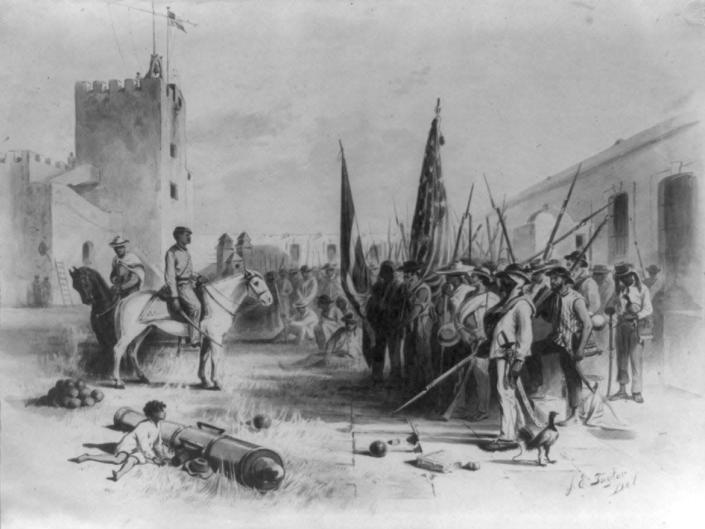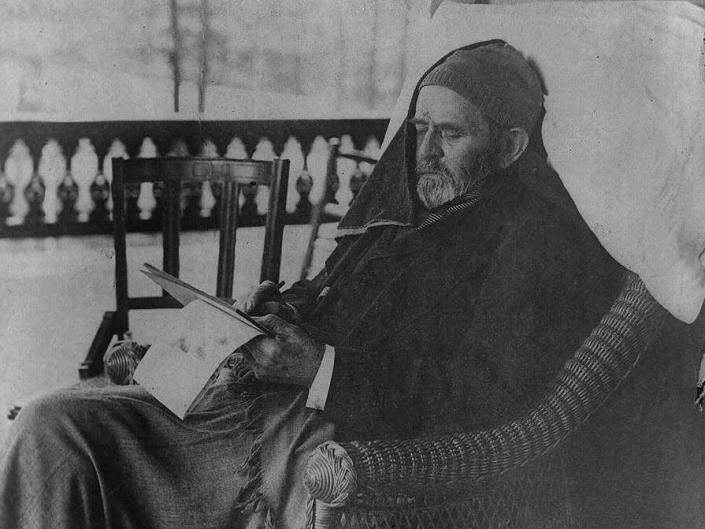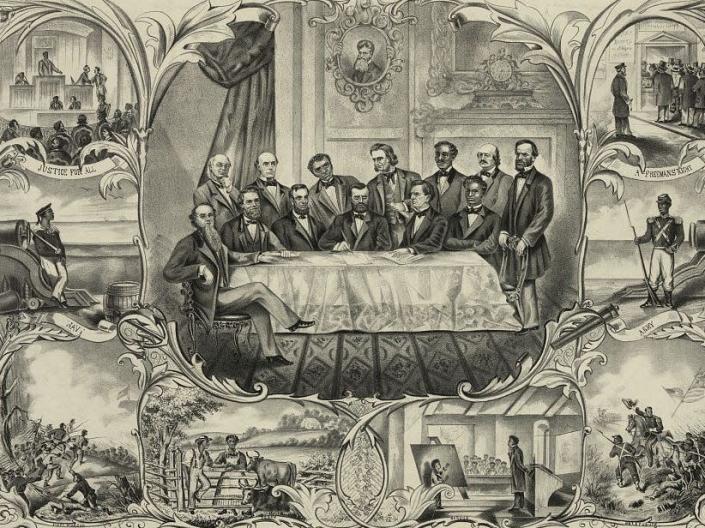
-
In 1871, President Ulysses S. Grant labored to accumulate the Dominican Republic.
-
Grant had issues over the long-term way forward for newly-emancipated Black People and the way they’d co-exist with white Southerners.
-
Historians advised Insider they consider this story can inform the broader dialog round Puerto Rico’s statehood.
As calls develop louder to decolonize Puerto Rico, its territorial standing serves as a reminder of the US’ not-so-distant colonial previous.
Earlier than Puerto Rico was annexed by the US in 1898 throughout the Spanish-American Warfare, the US had made makes an attempt to annex different territories in Latin America, together with Cuba and the Dominican Republic.
On June 30, 1871, a invoice titled the Annexation of Santo Domingo failed within the US Senate by solely 8 votes. If handed, the nation would have moved to accumulate the Dominican Republic and make it a state.
The political local weather of the US starting within the late 1860s was ripe with questions on what was subsequent for Black People. Historians advised Insider that within the early 1860s, earlier than the tip of the Civil Warfare, politicians in Washington, D.C. had been involved with how white folks would deal with newly-emancipated Black People. One of many concepts that some politicians thought-about was urging Black People to maneuver away from the mainland fully.
Some politicians and activists, together with Frederick Douglass, supported efforts to annex Santo Domingo (now, the Dominican Republic), as they noticed it as a spot the place Black People may personal property and stay freely. Douglass noticed it as a chance to develop the Black American inhabitants. Different politicians additionally had an expansionist mindset for the US.
Upon listening to in regards to the US’ want to broaden, leaders of the Dominican Republic reached out to make a deal.
“I believe it is type of a very telling second in US historical past, when it comes to how folks thought not solely about African People but additionally how they considered Blacks within the diaspora,” Dr. Lauren Hammond, Affiliate Professor of Historical past at Augusta Faculty advised Insider. “You could possibly type of use it nearly as a comparative case and lift questions on Puerto Rico’s standing and statehood.”

Ulysses S. Grant mentioned the most important battle within the US was a “prejudice to paint”
Just a few years after the Civil Warfare, it was turning into clear to these in Washington that Reconstruction efforts within the former Accomplice-controlled Southern states had been failing. President Ulysses S. Grant grew nervous in regards to the long-term way forward for Black People.
Drawing on prior conversations in Washington, Grant got here up with an answer. In accordance with a memo, he wrote that “prejudice to paint” was the most important battle within the nation and an answer to this may be transferring Black People to the island.
Grant wrote, “Caste has no foothold in Santo Domingo. It’s able to supporting the complete coloured inhabitants of the US, ought to it select to to migrate … The coloured man can’t be spared till his place is equipped, however with a refuge like San Domingo, his value right here would quickly be found.”
Regardless of being the final identified American president to personal an enslaved individual, Grant grew up in an abolitionist family, and, as a Union normal, fought alongside Black troopers, which can have impacted his views on slavery. Grant was not the primary US politician who thought-about sending freed Black folks outdoors the mainland. Afraid that Black and white People couldn’t peacefully co-exist, President Abraham Lincoln had additionally proposed sending emancipated Black folks to Liberia or Central America.

Hammond advised Insider that whereas Grant was involved with the racism going through Black People, he was additionally an expansionist who believed within the Monroe Doctrine, a coverage from 1823 that urged European powers to not intervene within the Western Hemisphere. Grant was initially concerned with buying Cuba, a Spanish territory, however as soon as that was not lifelike with out battle, he turned his curiosity to the Dominican Republic.
Whereas historians advised Insider that there’s proof that the US additionally thought-about annexing Panama or Brazil on the similar time to serve the identical goal, Dr. Gerald Horne, a historian who holds the Moores Professorship of Historical past and African American Research on the College of Houston, advised Insider that shortly fell via as a result of these international locations had been skeptical about why the US would ship solely their Black inhabitants there.
“There was much less concern within the Dominican Republic than in different Latin American nations about accepting what was thought-about to be a ‘Malicious program,'” Horne, the creator of “Confronting Black Jacobins,” which particulars the historical past of the Dominican Republic, advised Insider.
Leaders of the Dominican Republic needed the US to annex the island, historian mentioned
After the Warfare of Restoration in opposition to Spain, the Dominican Republic was searching for safety, Hammond mentioned. They had been in deep debt and prone to being reconquered by Spain, so President Buenaventura Báez reached out to the US.
Báez was conscious that President Grant was trying to purchase territories off the mainland, so he requested if the Dominican Republic could possibly be annexed.
On February 16, 1870, a vote was held within the Dominican Republic; 15,695 residents voted for annexation, and solely 11 voted in opposition to. With over 99% of the vote, a referendum handed within the Dominican Republic.
Hammond mentioned she would not belief the outcomes of that vote.
“There ended up being threats from Buenaventura Báez,” Hammond advised Insider. “So it is truly very troublesome to get a real pulse on what was occurring within the Dominican Republic.”
Within the US Senate, the annexation invoice to accumulate the DR failed 28-28 on June 30, 1871. It wanted ⅔, or 66%, of the vote to cross.

A lot of the opposition to the invoice was led by Massachusetts Senator Charles Sumner. Grant spent many months attempting to get Sumner on board, however Sumner had one predominant sticking level.
Sumner didn’t consider that the US ought to purchase any territories within the Caribbean or Latin America. Dr. Nicholas Guyatt, professor of North American historical past on the College of Cambridge, advised Insider that is as a result of Sumner believed that hotter local weather areas belonged particularly to Black folks.
“He gave these speeches about race-blind citizenship, however then he additionally mentioned particularly on this query that the tropical zone belongs to Black folks,” Guyatt advised Insider. “In case you say that then what are you saying about different areas, just like the subtropical areas of the US.”
Guyatt additionally mentioned that, given conversations and speeches in DC on the time, he believes that the US would have granted the Dominican Republic statehood had the annexation vote gone via. Many politicians confused the purpose that the US could not be like different empires with unincorporated colonies. Nonetheless, a number of many years later the nation’s place had modified.
“Had [annexation] occurred, I believe it could have created a brand new dynamic inside the federal system, which might have made the conquest of 1898 very troublesome to carry onto these territories like Puerto Rico for an extended time frame,” Guyatt advised Insider.
Most white Southerners did not assist annexation, historian mentioned
Throughout this time, white People largely fell into three teams in regards to the concern of annexation, Dr. Horne advised Insider. One group supported eradicating Black People from the mainland to take away any reminders of slavery. One other group supported eradicating Black People as a result of they did not need the US to turn into a multiracial republic. And a 3rd group needed to maintain Black folks on the mainland as a result of they had been an affordable labor provide.
Within the South, Hammond mentioned the principle sentiment was in opposition to annexation as a result of many Southerners had been uncomfortable with extra non-white folks becoming a member of the US. There have been additionally whispers that if the US annexed the Dominican Republic then it would not cease there. Some had been afraid they’d quickly take the complete island, together with Haiti.
“As soon as slavery was over, that worry of together with extra Black folks and people extra Black folks maybe being given rights and handled as equal US residents was deeply distasteful and disturbing to the overwhelming majority of Southern Democrats,” Hammond mentioned.
Total, Hammond and Horne mentioned the invoice failed as a result of it didn’t have broad assist outdoors Grant’s circle.

Frederick Douglass’ judgment was “clouded” when it got here to annexation, historian mentioned
A posh a part of this story is Frederick Douglass’ function within the nation’s want to accumulate the Dominican Republic.
After the invoice failed within the Senate, President Grant requested Congress to approve a three-person fee to go to Santo Domingo. The objective of the fee, in accordance with Grant, was to go on a “fact-finding mission,” to see if Dominicans supported turning into part of the US.
Frederick Douglass was one of many three assigned to the fee.
“My choice to go to Santo Domingo with the fee despatched thither was one other level indicating the distinction between the previous time and new,” Douglass mentioned after his choice.
Douglass’ understanding of why the US was annexing Santo Domingo appeared a bit misguided, historians advised Insider. In accordance with the Chicago Tribune, throughout a speech in December 1871, Douglass mentioned that the US was annexing Santo Domingo via “native consent,” quite than “intervention.”
Nonetheless, Horne mentioned that historians have lengthy struggled with easy methods to inform this a part of Douglass’ story.
Douglass was born a slave, turned free, and was a key abolitionist who suggested former President Abraham Lincoln on the ills of slavery. Douglass additionally had an understanding of European colonialism within the western hemisphere and supported independence efforts. Nonetheless, some historians say he failed to grasp the character of conquest and colonialism when it got here to the US. Douglass additionally did not perceive the US’ home motivations for buying the Dominican Republic, comparable to sending Black People to the island.
“This was not Fredrick Douglass’ most interesting hour,” Horne advised Insider. “Many had been simply so grateful, so gratified by being freed from slavery. And I believe it kind of clouds the considering. They had been keen to go together with any plan Washington got here up with.”
Hammond mentioned she reads Douglass’ statements from that point via a barely completely different lens. Hammond believes Douglass was seeing the annexation of the Dominican Republic as a win for Black People. They might be capable of add voters to the Black voters and thereby enhance the possibilities of gaining civil rights for Black People.
“I believe one factor we’ve to recollect is that Frederick Douglass was residing in a really sophisticated time and was a brilliant sophisticated particular person,” Hammond advised Insider.
Learn the unique article on Insider




